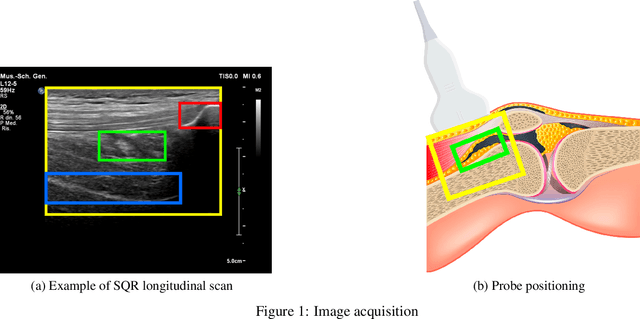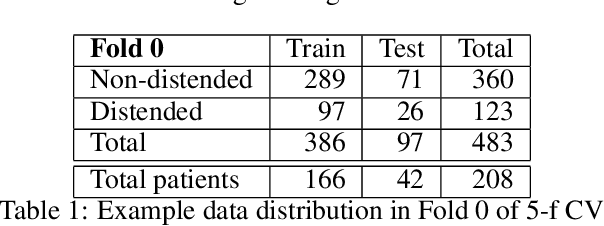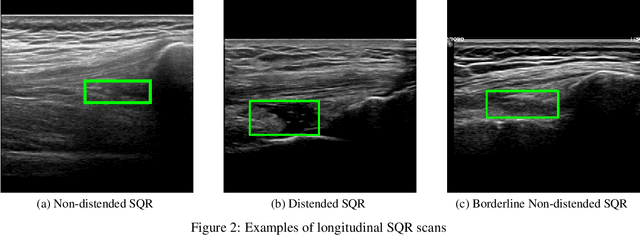Sergio Mascetti
ReC-TTT: Contrastive Feature Reconstruction for Test-Time Training
Nov 26, 2024Abstract:The remarkable progress in deep learning (DL) showcases outstanding results in various computer vision tasks. However, adaptation to real-time variations in data distributions remains an important challenge. Test-Time Training (TTT) was proposed as an effective solution to this issue, which increases the generalization ability of trained models by adding an auxiliary task at train time and then using its loss at test time to adapt the model. Inspired by the recent achievements of contrastive representation learning in unsupervised tasks, we propose ReC-TTT, a test-time training technique that can adapt a DL model to new unseen domains by generating discriminative views of the input data. ReC-TTT uses cross-reconstruction as an auxiliary task between a frozen encoder and two trainable encoders, taking advantage of a single shared decoder. This enables, at test time, to adapt the encoders to extract features that will be correctly reconstructed by the decoder that, in this phase, is frozen on the source domain. Experimental results show that ReC-TTT achieves better results than other state-of-the-art techniques in most domain shift classification challenges.
A Transfer Learning and Explainable Solution to Detect mpox from Smartphones images
May 29, 2023Abstract:In recent months, the monkeypox (mpox) virus -- previously endemic in a limited area of the world -- has started spreading in multiple countries until being declared a ``public health emergency of international concern'' by the World Health Organization. The alert was renewed in February 2023 due to a persisting sustained incidence of the virus in several countries and worries about possible new outbreaks. Low-income countries with inadequate infrastructures for vaccine and testing administration are particularly at risk. A symptom of mpox infection is the appearance of skin rashes and eruptions, which can drive people to seek medical advice. A technology that might help perform a preliminary screening based on the aspect of skin lesions is the use of Machine Learning for image classification. However, to make this technology suitable on a large scale, it should be usable directly on mobile devices of people, with a possible notification to a remote medical expert. In this work, we investigate the adoption of Deep Learning to detect mpox from skin lesion images. The proposal leverages Transfer Learning to cope with the scarce availability of mpox image datasets. As a first step, a homogenous, unpolluted, dataset is produced by manual selection and preprocessing of available image data. It will also be released publicly to researchers in the field. Then, a thorough comparison is conducted amongst several Convolutional Neural Networks, based on a 10-fold stratified cross-validation. The best models are then optimized through quantization for use on mobile devices; measures of classification quality, memory footprint, and processing times validate the feasibility of our proposal. Additionally, the use of eXplainable AI is investigated as a suitable instrument to both technically and clinically validate classification outcomes.
Ultrasound Detection of Subquadricipital Recess Distension
Nov 22, 2022



Abstract:Joint bleeding is a common condition for people with hemophilia and, if untreated, can result in hemophilic arthropathy. Ultrasound imaging has recently emerged as an effective tool to diagnose joint recess distension caused by joint bleeding. However, no computer-aided diagnosis tool exists to support the practitioner in the diagnosis process. This paper addresses the problem of automatically detecting the recess and assessing whether it is distended in knee ultrasound images collected in patients with hemophilia. After framing the problem, we propose two different approaches: the first one adopts a one-stage object detection algorithm, while the second one is a multi-task approach with a classification and a detection branch. The experimental evaluation, conducted with $483$ annotated images, shows that the solution based on object detection alone has a balanced accuracy score of $0.74$ with a mean IoU value of $0.66$, while the multi-task approach has a higher balanced accuracy value ($0.78$) at the cost of a slightly lower mean IoU value.
 Add to Chrome
Add to Chrome Add to Firefox
Add to Firefox Add to Edge
Add to Edge